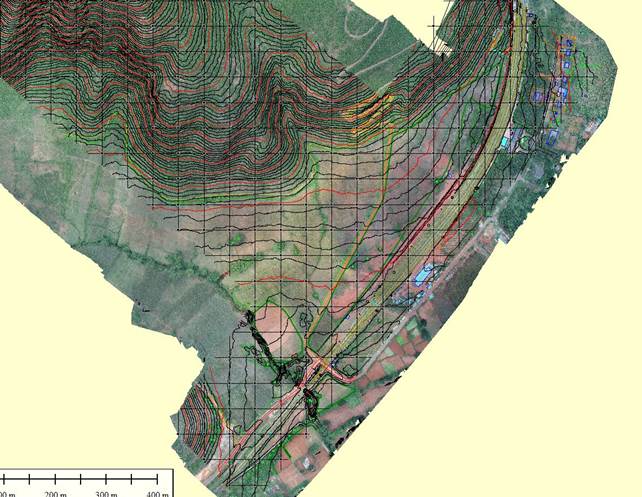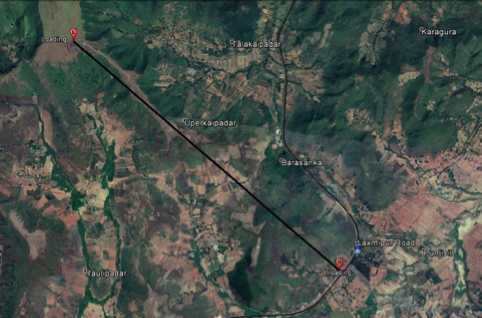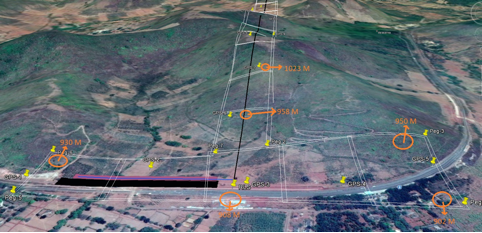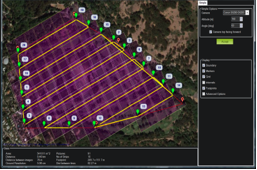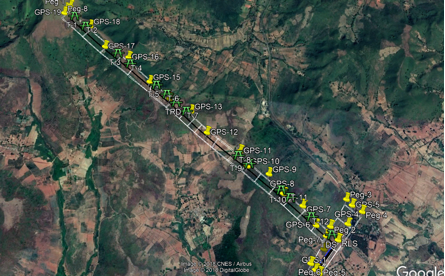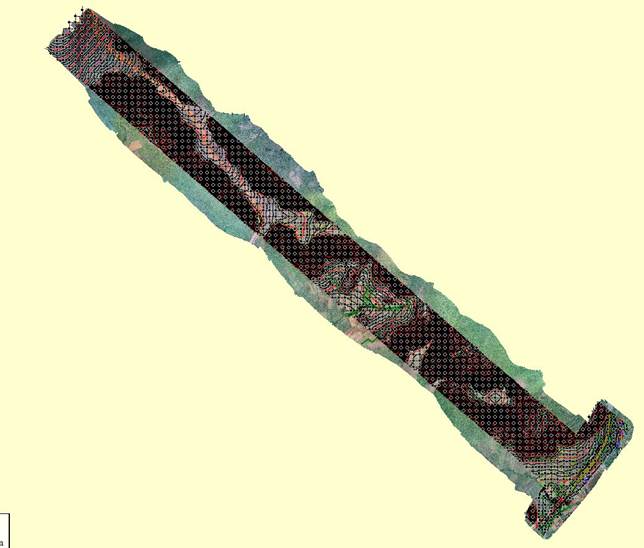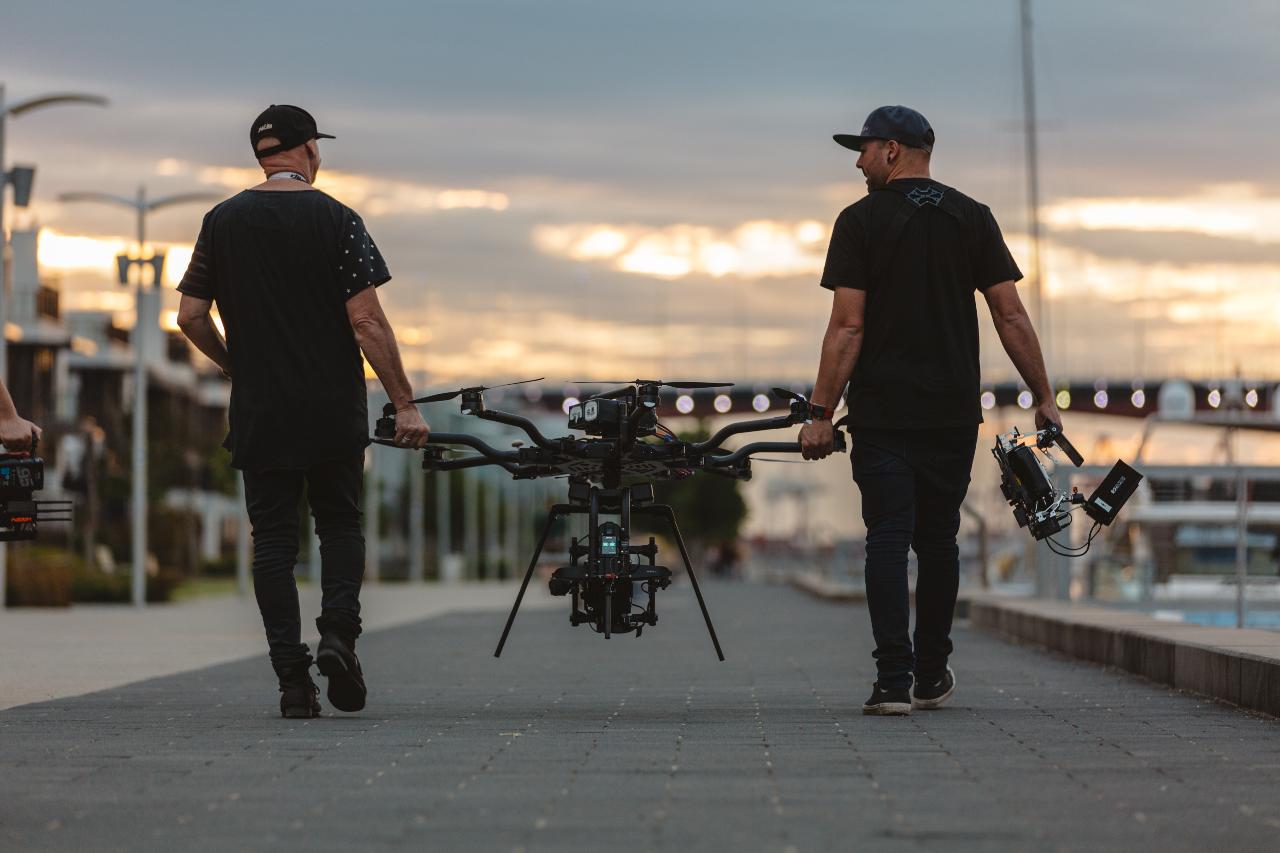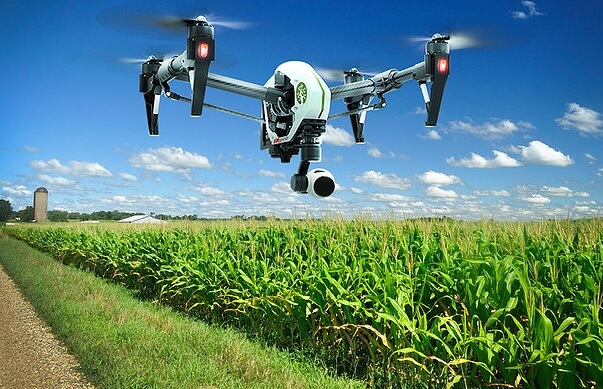After a few minutes spent on the office computer entering flight and insecticide treatment plans, a click of the ‘start’ button on the autonomous crop management programme sets things in motion. The drone garage door swings open, there’s a rapid rise in the clearly audible buzz from a hundred propellers and a swarm of spraying drones heads off to work as a co-ordinated team to tackle aphids threatening the farmer’s crops.
Rapid pace of drone development
This may be an imaginary scenario for now, but given the rapid pace of drone development – and more especially the software to control them both individually and in packs – it is certainly not inconceivable for the near future.
Another 100 or so are understood to be operating in South Korea and the company recently started rolling out the technology in Australia and New Zealand, and also in the US where the Federal Aviation Authority permits Yamaha to conduct research and trial commercial services.
Brad Anderson, division manager of Yamaha Precision Agriculture, is confident small-scale helicopters have a role to play in situations such as areas of fields where manned aircraft are unable to operate because of power lines or adjoining sensitive crops. But of particular interest is the use of the mini helicopters to spray powdery mildew fungicides on narrow-spaced vines, such as in California and the Pacific north-west, which are often grown on hillsides and can otherwise only be treated on foot using backpack sprayers.
Crop treatments from individual drones or unmanned aerial vehicles (UAVs) are already widespread across Asia, while aviation and other relevant authorities elsewhere in the world are now allowing drones to be used for limited and specific trials and, in some cases, commercial operations in agriculture, horticulture, viticulture and forestry. Spraying for disease, weed and pest control, spreading microgranular pesticides and fertilisers – and even beneficial insects – as well as planting new forests are among the diverse uses now being found for drones
Replacing back-pack sprayers
For the most part, drones make sense where they can replace labour-intensive and potentially harmful use of backpack sprayers and similar equipment, in situations where terrain and/or ground conditions rule out the use of conventional or even specialist vehicles. In China, where government subsidies encourage the use of agricultural drones, market leader DJI Innovation Technology claims that more than 10,000 trained operators are now using the Agras MG-1 series 8-rotor spraying drones first introduced in 2015.
The company continues to develop the design with improved autonomous flight performance, such as terrain-hugging flying height control, and such is the growth of drone operator services working in agriculture that DJI forecasts annual sales of 45,000 units by 2020.
Tackling invasive plants
Spraying herbicide to control invasive plants in remote or difficult to access areas is another potential application – such as the programme undertaken by Great Lakes Council in Australia to control Bitou bush using a helicopter operated by Yamaha’s Key Aerial Services in the country.
‘If it does become possible to spray from drones, there will still be sufficient legislative hoops to go through’
In the UK, bracken growing on inaccessible hill sides in upland areas important for sheep production is the target for trials being conducted by a consortium of farm drone enthusiasts and other interested parties. They hope to gather evidence on this and other potential applications to convince aviation and pesticides authorities to allow spraying and spreading from drones.
“We’re making progress,” says Norfolk farmer Chris Eglington of agricultural drone services provider Crop Angel. “But I think if it does become possible to spray from drones, there will still be sufficient legislative hoops to go through that would limit field operations to qualified contractors.”
Pest control advances
Bracken control, forestry and other specialist applications apart, he sees potential in arable cropping agriculture primarily being spot spraying of weeds occurring in distinct patches – such as blackgrass – and precision targeting of insect pests, especially if drones can detect as well as treat pest threats autonomously. That is something researchers in Japan at Saga University and technology company OPTiM are working on – a drone that can locate pest insects and treat clusters with a targeted dose of insecticide.
The AgriDrone has reportedly been put through its paces on soy and potato crops and is designed primarily for use at night, utilising infrared and thermal cameras to locate and treat insects congregating in harmful numbers. An electric bug ‘zapper’ suspended beneath the drone is also being trialled as a pesticide-free treatment.
Dispensing pest-eating beneficial insects to field crops
Another environmentally-friendly approach being developed in Denmark, dispenses pest-eating beneficial insects to field crops. Søren Wiatr Borg of South Denmark University, one of the participating organisations in the research group, explains the rationale for the project. “The use of bio-control agents has predominantly been within high-value indoor production, where there is a controlled setting and a high-level of infrastructure,” he points out. “It has been difficult and far too expensive to use nature’s own pest control methods on large open areas – but using drones, it is now possible.”
Developing a broadcaster that can evenly distribute live beneficial insects such as ladybirds, predatory mites and parasitic wasps, has been a significant challenge, adds Anders Petersen of drone technology start-up Ecobotix. “Our spreading device is at the late prototype stage and we are testing it with selected customers, who typically are producers of high-value organic crops, or simply growers seeking to avoid the use of chemical insecticides.” A commercial introduction is anticipated this year for agricultural service providers permitted to operate drones for aerial application to combat pests in strawberries, fruits, vegetables and Christmas trees, and also in cereal crops.
Spreading seed and granules
A less sophisticated spreading solution has been devised by Australian drones retailer Rise Above. Take one Scotts hand-held grass seed and fertiliser spreader, replace the hand crank with an electric motor, fit a hopper extension and fix it to the underside of a drone with clamps. Rise Above lists the item for AU$ 1,250 (€ 780) alongside other custom payload solutions, such as the AU$ 1,249 (€ 779) BirdGard audio bird scarer for the AgStar agricultural drone.
Mosquito and invasive plant control, as well as seeding and similar applications are the target for a bespoke spreader solution from CFR Innovations. The 8-litre (2.11 gal) capacity UGS-1 battery-powered granule spreader weighs 1.1 kg empty and has remote control of the spinner with its twin outlet tubes. The Canadian company’s Johnny Guérin says the spreader is suspended in a way that minimises its impact on the drone’s flight stability; he plans larger versions than the first model.
Agronator 8-rotor drone
The potential for specialist spreading applications has also caught the attention of one of Europe’s leading tractor-operated fertiliser broadcaster manufacturers. Rauch, whose products are distributed under the Kuhn name outside Germany, has endorsed the Agronator 8-rotor drone project by developing a suspended spreader with 50-litre (3,051 cu in) hopper and Draco single-disc broadcasting mechanism with rate and width control system.
“A big advantage of our CultiCopter fertiliser and microgranule spreading drone is that irrespective of the terrain, it is possible to spread material with a high degree of precision and efficiency,” says Jens Hiller of Rauch.
The 8-rotor drone itself spans 4 m, weighs some 80kg (176 lb) and can carry up to 30kg small seeds, mineral fertiliser or pest control material such as slug pellets, although these statistics may change when the second-generation Agronator in development is revealed.
Tags: Drone Photography, Pesticide, Agriculture, Mite-spreading


